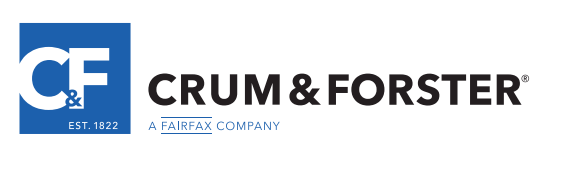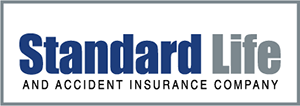Strategies with an HDHP
Employers understand raising their employee’s deductible, and/or out-of-pocket expenses, is not the best way to say thank you. Employers should take the initiative to show their employees the increase in healthcare costs, and demonstrate they are looking at alternatives to maintain their existing benefits while getting premiums under control.
While some employers will want to use a portion of the reduction to possibly fund an HRA or HSA, other employers may choose to pocket the savings. The third option would be to put in a supplemental plan that can maintain the same benefits while pocketing some of the savings.
Employers wanting to consider an HDHP, while trying to stay close to their current plan design, can try one of the following three options:
1. Health Reimbursement Arrangement (HRA)1
In a nutshell, an HRA plan is set up to allow employees to be reimbursed up to a certain amount when they have a covered expense. The employer puts these funds into an account with a specific limit per employee. Any funds not used by the employee can be rolled over to the next year, at the discretion of the employer. For example, an employee who uses $0 of the $1,000 annual HRA in Plan Year 1, has a carryover, making available an increased $2,000 HRA in Plan Year 2.
The HRA can be used for doctor’s office visits, prescriptions, surgeries, or any other 213d expenses allowed by the plan. This is a way to help employees cover the portion under the deductible. Remember, the goal would be to take a portion, or all the savings, from switching to a high-deductible plan and put it into an HRA for each employee. If you were saving $100,000 a year, and you had 50 employees, you could put $2,000 a year in their HRA.
As good as this may sound, the HRA only pays out what has been contributed or set into the employer’s HRA contract to be paid out. This is still a good alternative for the majority of employees, but high users on the group health plan may feel the pain. An alternative would be to use a supplemental medical/gap plan, which is basically like an “Insured HRA”. There are numerous gap plans that can provide this benefit; however, there is only one plan in the market that does not have all the exclusions.2 This plan is called the Premium Saver plan and is offered by three different insurance companies (AmFirst Insurance Company, Monitor Life Insurance Company of New York, and Standard Life & Accident Insurance Company).
2. Health Savings Account (HSA)
A health savings account allows employees and/or employers to set aside money for future health expenses (medical, dental, vision, etc.) with a tax deduction and tax-free growth up to $3,650/$7,300 in 2022. To set up an HSA within a group medical plan, it must be a Qualified High-Deductible Health Plan. Remember, this means the member must meet the deductible prior to anything being covered by the plan. The biggest “gotcha” to these QHDHP's is the prescription & doctor's office visit is not covered during the deductible period; however, if you have set aside money in your HSA, those funds can be used for these expenses.
According to an article by Forbes3, High Deductible Health Plans (HDHPs) can have premiums that are significantly lower than traditional health plans. The article states that "HDHP premiums are typically 10% to 40% lower than those of traditional health plans" depending on the specifics of the plan and the coverage options selected.
Implementation Strategy Ex. 1: When a group is healthy, with younger employees, it is an ideal time to consider setting up an HSA plan and helping the employees fund their account. Not to mention the tax-free growth that can compound and build real savings for the future.
Implementation Strategy Ex. 2: These plans can also be set up as a 2nd plan type for members in the group who may rather contribute to an HSA for future preparation than enrolling in a lower out-of-pocket plan now.
One negative to an HSA over an HRA or the Premium Saver would be that funds contributed to an employee’s HSA account stay in their account if they leave the company. This means, if you contribute to your employee’s HSA for several years, and they leave, it does not stay in your account like the HRA. This is a positive for the employee and a negative for the employer.
3. Premium Saver Plan
The Premium Saver Plan is a supplemental medical policy which is referred to by some as a gap plan. The reason we are evaluating the Premium Saver specifically, over other gap plans in the market, is because this plan is considered the “Cadillac of Gap Plans”. Like the HRA/HSA, the Premium Saver does not exclude common procedures which can be excluded among other gap plans. The Premium Saver plan only excludes the professional fee of a physician and outpatient prescription drugs. However, an additional rider can be added for these two exclusions. Often, the major medical plan will cover these services with a copay.
Typical Gap Plan Exclusions: complications after childbirth, physical therapy, speech therapy, chemotherapy, lab work, ambulance transportation, outpatient therapy, EKG, EEG, ECG, substance abuse, nursing home, hospice, skilled nursing facility, outpatient immunotherapy (rheumatoid arthritis or Chron's disease), and many other procedures.
The goal of providing health insurance is to give employees added security in knowing that catastrophic health events will not put them in a situation of financial unrest. The main reason this plan is chosen is due to the larger benefit provided, compared to the contribution amount with the HRA/HSA. Although this plan is not a savings account for the employee or employer, it provides the greatest benefit of all three options.
How the Premium Saver Works
As the employer, if you choose to go from a $1,000 deductible plan to a $5,000 deductible plan, you could expect an average 30% reduction on your major medical premium. Therefore, “ballpark pricing” may bring your premiums from $600 PEPM to $400 PEPM. This leaves you with $200 per employee per month to replace the $4,000 difference in benefit.
Alternate Plan: $5,000 Deductible/100% Plan; Alternate Rate: $400 PEPM ($200 Less Per Month)
Premium Saver Plan: $1,000 Deductible/100% plan with $4000 benefit
So when comparing these three strategies, the Premium Saver Plan provides a better benefit for employees while creating savings for employers:
| $200 Monthly Benefit | HRA | HSA | Premium Saver |
|---|---|---|---|
| Employee Benefit from Savings |
$2,400 Annual Benefit | $2,400 Annual Benefit | $4,000 Annual Benefit |
| Employer Savings per Employee |
NA | NA | $100 PEPM Employer Savings |
1UnitedHealthcare (n.d.). What Is a Health Reimbursement Account (HRA)? Retrieved July 9, 2024, from https://www.uhc.com/understanding-health-insurance/understanding-health-insurance-costs/health-reimbursement-accounts
MacConnell, E. (2022, November 25). What Is a Health Reimbursement Account (HRA)? Retrieved July 9, 2024, from https://totalbenefits.net/what-is-a-health-reimbursement-arrangement-hra/
2Abernathy, T. (2024, May 15). What Is Gap Medical Insurance? ValuePenguin. Retrieved July 9, 2024, from https://www.valuepenguin.com/gap-medical-insurance-guide
3Martin, E. (2022, September 7). High Deductible Health Plans: Your Complete Guide To HDHPs. Forbes Advisor. Retrieved August 27, 2024, from https://www.forbes.com/advisor/health-insurance/high-deductible-health-plan/
About the Author
Ryan Eaton is the Chief Marketing Officer and Executive Vice President of Morgan White Group. He has spent over 15 years with MWG in sales, management, or leadership roles. He currently manages a sales team that markets insurance products to over 22,000 agents in all 50 states. He is a husband and father of two boys and enjoys anything outdoors: sports, hunting, fishing, cooking out, and leading a father son Christian fellowship in his community.



-square.jpg)


